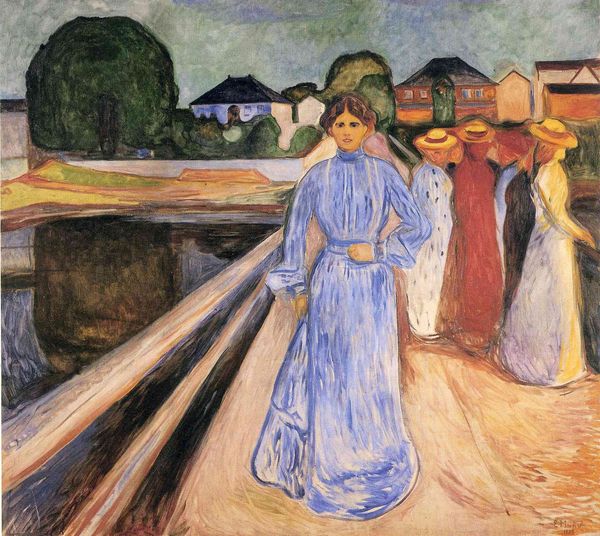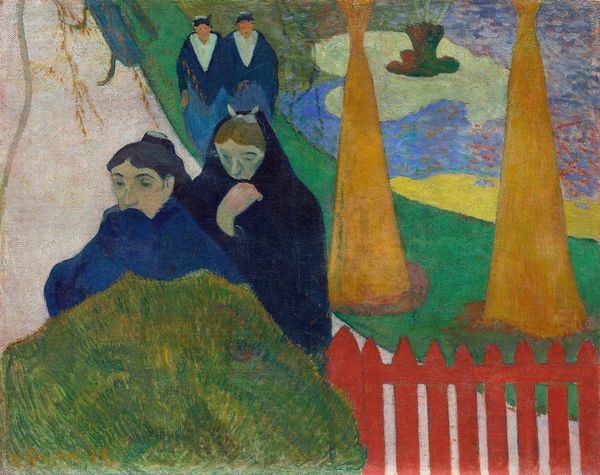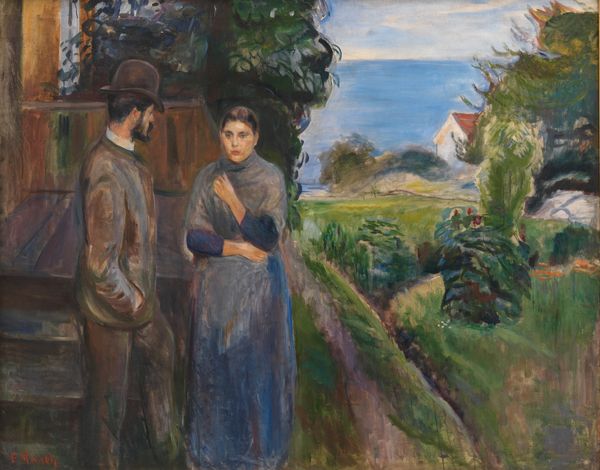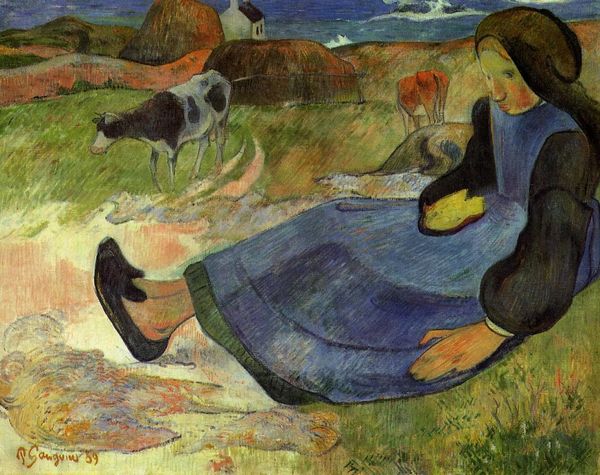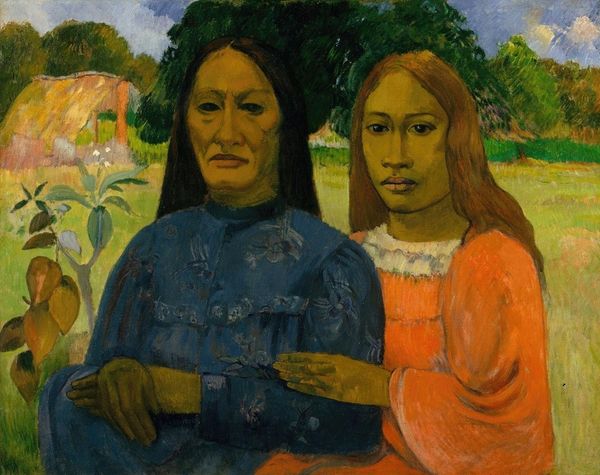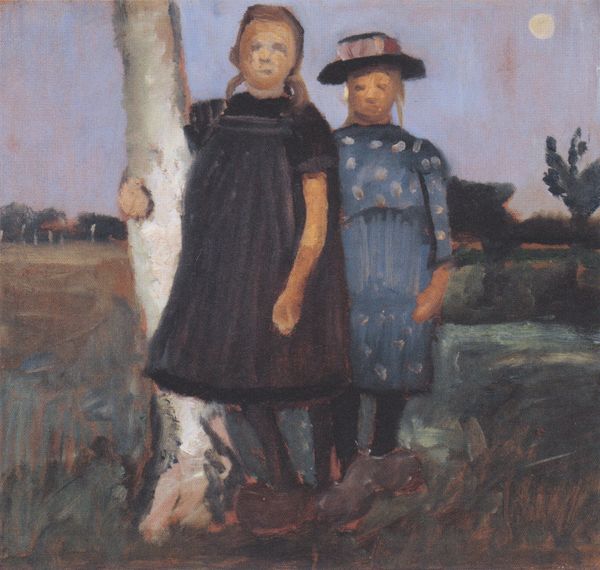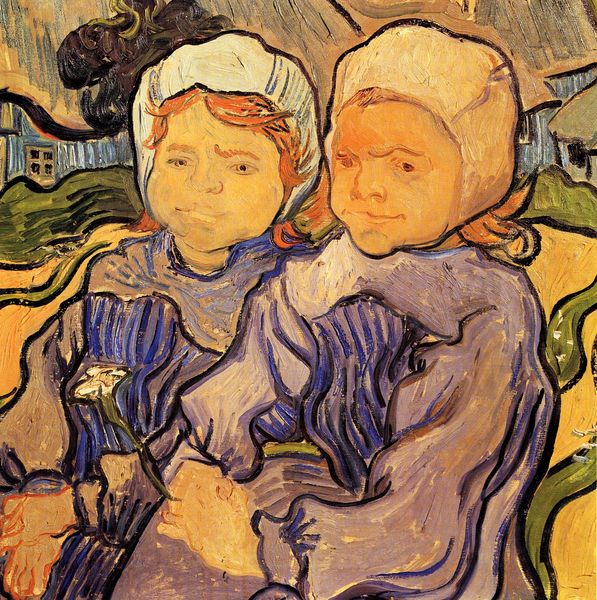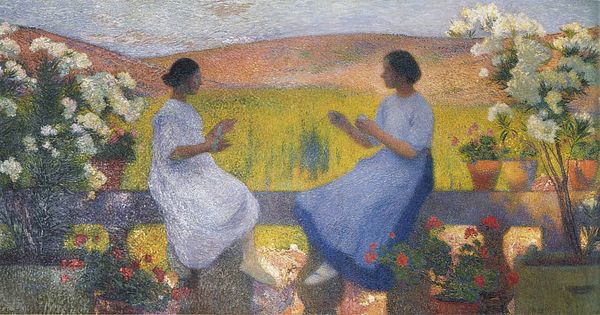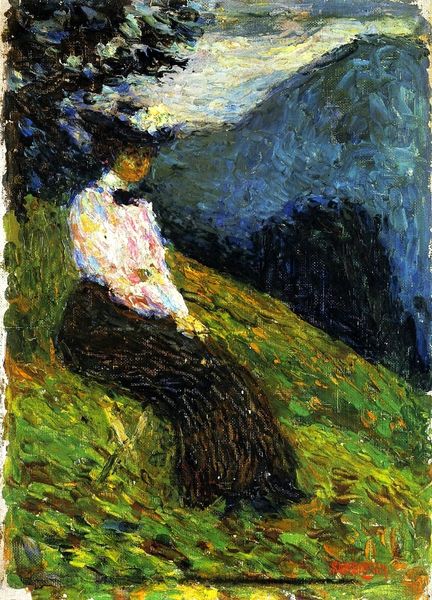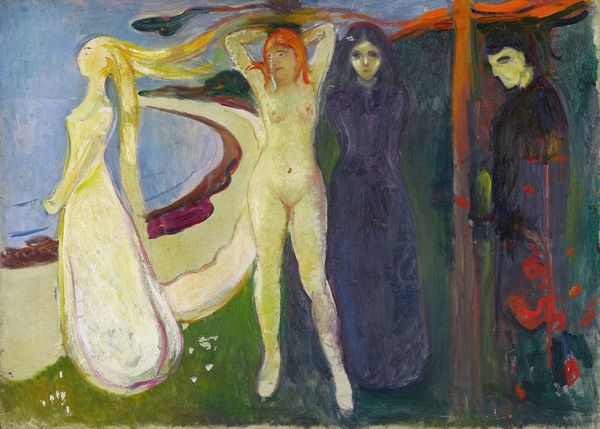
Copyright: Public Domain: Artvee
Curator: This is Edvard Munch's "Mother and Daughter," likely painted between 1897 and 1899, rendered with oil paints. Editor: It immediately strikes me as…restrained, almost somber. The figures, while distinct, seem bound by a shared sense of melancholy. Is that the Norwegian light, or is there more? Curator: It’s tempting to see Munch's life and personal experiences etched into these brushstrokes. Given Munch's intense interest in depicting the complexities of human emotion, could we explore some of the symbols he employs? The women are set against the backdrop of the verdant Norwegian landscape and beneath a bright moon. Are there cultural precedents that could inform Munch's symbolism here? Editor: Certainly. The moon is, of course, a powerful symbol – often connected to femininity, cycles, and even madness. Consider the placement – high above, casting a pale glow, it watches over the women. The bright white garb of the daughter contrasts with the somber maroon of the mother; colors that symbolize purity versus something darker. We can also talk of the surface—notice how he has layered the oil paints and rendered his work. How might these gestures enhance its narrative power? Curator: Good eye! He has thinned down the paint here creating visible texture across the surface of the artwork. The house almost seems precariously positioned on the landscape—consider Munch's exploration of psychological terrain in relationship to place in Norway. Perhaps these visual qualities point to fragility and the labor in crafting this mother daughter dyad. I would point to this choice of technique to deepen our insight into how labor and family were intertwined in the late 19th Century! Editor: I agree that Munch explores relationships through these kinds of visual textures and also appreciate the psychological power of those layered brushstrokes. How the white paint on the dress almost merges with the skin and appears slightly translucent, yet the solid structure and form grounds the subjects—very clever work. Curator: Overall, thinking about both craft and symbol opens the work, and also our ideas, further than we’ve ever dared to imagine before. Editor: I completely agree, and in looking at this again, it brings the quiet intensity between a mother and daughter—to life with startling depth and subtlety.
Comments
No comments
Be the first to comment and join the conversation on the ultimate creative platform.
